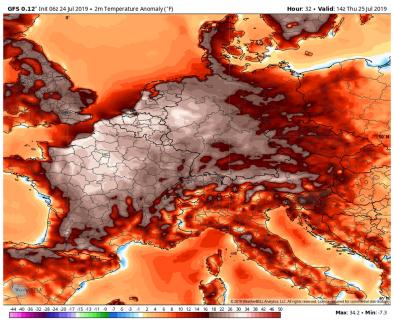Science Source
Trends in Weather Extremes
- The author's trend analysis shows that almost everywhere heat extremes (defined as the highest daily average temperature of the year) are now warmer than a century ago, following the obvious first-order connection with global average temperature
- One exception is in the eastern U.S. where heat extremes are now roughly as warm as they were during the Dust Bowl of the 1930s
- Finds that cold events (the daily average temperature of the coldest day of the year) heat up even faster than the heat extremes, up to a factor of five times the global mean temperature
- Looks at the highest daily precipitation of the year as a measure of extreme precipitation and finds that the highest daily mean of the year has increased at more stations than it has decreased
- Finds that the average global increase in precipitation is similar to the increase of the amount of water the atmosphere can hold at higher temperatures (the Clausius–Clapeyron relation), about 7% per degree Celsius, but local trends are often different from the global average
- Finds that even if the theoretically expected increase in the most intense tropical cyclones is not yet detectable, their physical impacts have increased substantially already
- Graphics
Related Content
Headline

Jul 30, 2019 | Washington Post
The world’s climate emergency is getting harder to ignore
Headline

Jul 25, 2019 | Washington Post
In Europe, a historic heat wave is shattering records with astonishing ease, may hasten Arctic melt
Science Source
| Proceedings of the National Academy of Sciences
Quantifying the influence of global warming on unprecedented extreme climate events
Noah S. Diffenbaugh, Deepti Singh, Justin S. Mankin et al
Science Source
| Geophysical Research Letters
The relative increase of record high maximum temperatures compared to record low minimum temperatures in the U.S.
Gerald A. Meehl, Claudia Tebaldi, Guy Walton et al


